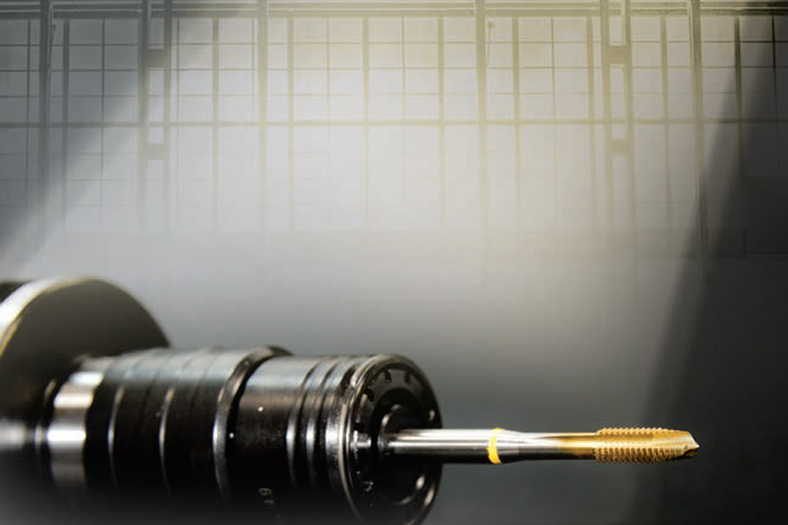Smart and sustainable manufacturing: Saving the industry world
By OEM Update Editorial January 11, 2019 5:35 pm IST
Being smart and sustainable, is what the manufacturing world needs to know. Here, is an exclusive and detailed analysis by the experts on why and how an energy efficient manufacturing process should be implemented.
Manufacturing industry is highly dependent on power for its shopfloor activities. Energy consumption in manufacturing plants incurs higher operational expenses.
Less energy and increased operational efficiency
Increasing energy efficiency by cutting down energy consumption will enable companies to reduce operational costs and sustain competitiveness. Adopting an energy efficient management system is the need of the hour for all manufacturing companies.
P. Ramadas, President, IMTMA says, “With the world moving towards digitisation, Indian companies need to learn the machine language, embrace technologies such as IoT, so that engineers can gain access to information in real time. By integrating IoT enabled innovations in the production line, the management can increase energy efficiency and reduce costs. This will result in economic savings and increase the profitability of the ventures.”
Machines are first born in the mind of the creator which is the design department. Design with use of appropriate technology and properly sized motor will ensure optimal energy consumption. T K Ramesh, MD and CEO, Micromatic Machine Tools Pvt Ltd. says, “The choice of right material manufactured optimally ensures operational efficiency. In addition to this, the use of proper sensors and the technology of IoT can further optimise energy consumption.”
Machine tools include numerous motors and auxiliary components. Energy consumption varies significantly during operations. The main spindle drive, coolant system, air conditioning and spindle cooling chiller system.
Mayank Tripathi, Area Manager Sales North India, Hurco India states that the following activities in milling operation to consume power:
• CNC control and spindle motor with al feed axis motors
• Coolant and lubrication process for featuring and machine lubrication
• Compressed air required for dry machining, tool changing operations and cleaning operations
• Electrically powered other auxiliary components like panel AC
Tripathi adds, “Relatively calculated energy for lighting, spindle cooling, and air conditioning must be added to these groups. The energy demand Milling process energy demand depends primarily on the size of the milling machine and the machining task.
It has been proven in the past that the energy consumed by machine tools during machining is significantly greater than the theoretical energy required in chip formation. For instance, the specific cutting energy accounts for less than 15 per cent of the total energy consumed by a modern automatic machine tool during machining.
Maulik Patel, Executive Director, SLTL Group says, “In our laser cutting machines, we’ve integrated smart fume suction, where the suction system is divided into a number of sections and is only triggered by sections of cutting.” One area of potential savings comes from the machine tool base load, which consumes energy even in non-productive phases. Patel adds, “In SLTL Group’ machines, we’ve smartly introduced a feature called ‘fly cut’ which enables to save the power during movement of cutting head during non-cutting portions. This saves some seconds per piece but overall energy savings in a day of production is considerable. “
Dry machining has great potential for improved energy and resource efficiency. Some energy consumers, for example, can be switched OFF by the machine control during non-productive phases.
Rajesh Savergaonkar, BU Head, Grind Master points out the following:
• Standardisation of material usage: Machine tool structures (base, outer structures, motor & gear box mounting brackets) constitute majority of metal part in machine tool. Standardisation of these structures is one of the areas for time and cost reduction.
• Digital manufacturing: Optimisation of material usage (size, weight) can be done by stress analysis and simulations. Optimisation will lead to realisation in material cost, machining process and cost, assembly cost, handling cost, packing and transportation cost. This will also lead to optimum use of motor with optimised power (HP / Kw) & other peripherals (PLC, etc.).
• This will automatically lead to less operational cost. Also intelligent controls (if no load for more than 4 min. everything will be hibernated) will reduce operational cost.
Manufacturing intelligent tools to address key customer requirements
“These are tools that can give out information about machine condition, health use periodically by analysing this information it is possible to design and manufacture optimal tool,” says Ramesh.
An effective data portal can save your manufacturing time and money by automating processes, like procurement, manufacturing inventory and sale. Now a day it’s an easy job to trace an automobile part manufactured in a unit five years back. It’s because of the system or data portal we are using.
Tripathi says, “In the present industrial era, it’s mandatory to implement intelligent tools. As your business grows and attracts more customers and users, your infrastructure for engaging with customers’ needs, needs to expand and adapt. A data portal is one way to scale as your business grows.”
Savergaonkar says, “Manufacturing tools need to be vulnerable to suit the exact requirement of customers. Reduction in conversion time from engineering to manufacturing to actual usage is the key factor; also, optimising tool life, using same tools for different applications.
Every company needs to have keep special emphasis on Research and Development to understand customer requirement in the market. Patel says, “We, at SLTL Group, invent and involve intelligent tools for our machines as per the customer’s require, keeping in mind the capital investment capabilities of customers. Last year, we launched Infinity F1 laser cutting machine, which comes in with advance features to boost productivity and with modular product architecture.”
Key barriers in implementing energy efficiency and smart technologiesA machine tool consists, generally, of machine frame, guides, drives and control units. The integrated electrical components are signal elements, drives and actuators as well as wiring and measuring systems. Power ratings represented as an attribute of the machine tools is a measure of the potential power used under the individually assumed operating conditions. It is assigned by the machine tool manufacturer for an observed system designating, for instance, consumption for each component.
Tripathi of Hurco India says, “Throughout the operation of a machine tool, process-induced performance requirements affect the power demand of the components. Depending on the structure of the machine elements and their operation, the power consumption is, therefore, not static but rather dynamic.
Besides enhanced usage of automation technology, the origins of a higher power consumption of machine tools can be attributed to an increased power consumption of its integrated components. The demand for a higher processing performance has been satisfied by increasing the torque of the main spindle resulting in higher power demands.
Ramesh of Micromatic Machine Tools states some of the barriers in implementing smart technology in the shop floor as:
• Not enough awareness
• Lack of digital equipment and cost
In the machine tool sector, the industries are already heavily invested in technologies. Consider, once a company invests a considerable amount in introducing new technology to improve the existing production line and is expected to work for next decade or two. Technology advancements are very volatile these days and every day, there is something new in the market that promises to improve the manufacturing process but the current arrangement of the company might not be favourable to make a shift.
According to Patel of SLTL Group, another big obstacle is the nature of the technology and complexities it comes along with. First, the overall need of the technology. Many systems sound cool and tempting to integrate with line of machines and also, these systems are properly tested and verified to risk increase in cost to the customer without considerable value to cost difference. Secondly, small scale industries ability to integrate new systems with the existing line of machines, considering their technical and financial setup.
Unawareness about availability of energy and its cost are major factors. Constituting energy team in manufacturing company with clear ownership of its results and regular energy audits can stop the leakages in energy, adds Savergaonkar of Grind Master.
Price war: cost prevails over quality
In the battle to grab the attention of the customer, companies use a wide range of tactics to ward off the competitors. Increasingly, price is the weapon of choice—and frequently the skirmishing degenerates into a price war. To effectively advocate competition, officials must understand when competition itself is the problem’s cause, not its cure. Market competition, while harming some participants, often effects quality. For example, two merging firms may well argue that ongoing competition will leave them with insufficient profits to make valuable and necessary investments to serve consumers. Tripathi says, “Price war between two organisations is good for the users. In a longer term, however, it gives a negative result. Your support and quality will be hampered as you are not able to get the desired margins to maintain the brand. Cost-effectiveness is right but one should not compromise on quality for a short time gain.”
Ramesh of Micromatic Machine Tools says, “Firstly, there is never a cost to quality. In today’s situation, either there is quality or it’s a waste.” Quality in a product or a service and the cost really comes from the materials, human interference etc. He adds, “In the event of a price war, companies that cut quality to reduce cost are extremely short sighted in their approach and are sure losers at the end of the day.”
“A decade and a half back when SLTL Group started with fiber laser technology, we were the sole players in the market and we were able to focus on only one thing that is quality to our customers, says Patel. He opines that the market of today is very much crowded with integrators, industries experts who does assembling the product by bringing components from overseas. This has helped them cut the massive cost of R&D but as a result, they have barged quality drastically. These industries claim to be manufacturers but are none more than assemblers and this impacts the reputation of overall manufacturing industries.
Patel says, “The current price war has created a situation termed ‘Perfect Competition’ where most of the industries trade at almost similar prices. When integrators and fundamental manufacturers (industries with in-house R&D) is compared through cost parameters, it is very likely that customers in manufacturing industries are compromising on quality.” One thing the buyers have to understand is technology and machines cannot be compared with cost.
Increasing energy efficiency by cutting down energy consumption will enable companies to reduce operational costs and sustain competitiveness.
P. Ramadas, President, IMTMA
Cost-effectiveness is right but one should not compromise on quality for a short time gain.
Mayank Tripathi, Area Manager Sales North India, Hurco India
One thing the buyers have to understand is technology and machines cannot be compared with cost.
Maulik Patel, Executive Director, SLTL Group
The choice of right material manufactured optimally ensures operational efficiency.
Ramesh, MD and CEO, Micromatic Machine Tools Pvt Ltd.
Optimisation will lead to realisation in material cost, machining process and cost, assembly cost, handling cost, packing and transportation cost.
Rajesh Savergaonkar, BU Head, Grind Master
Cookie Consent
We use cookies to personalize your experience. By continuing to visit this website you agree to our Terms & Conditions, Privacy Policy and Cookie Policy.
















